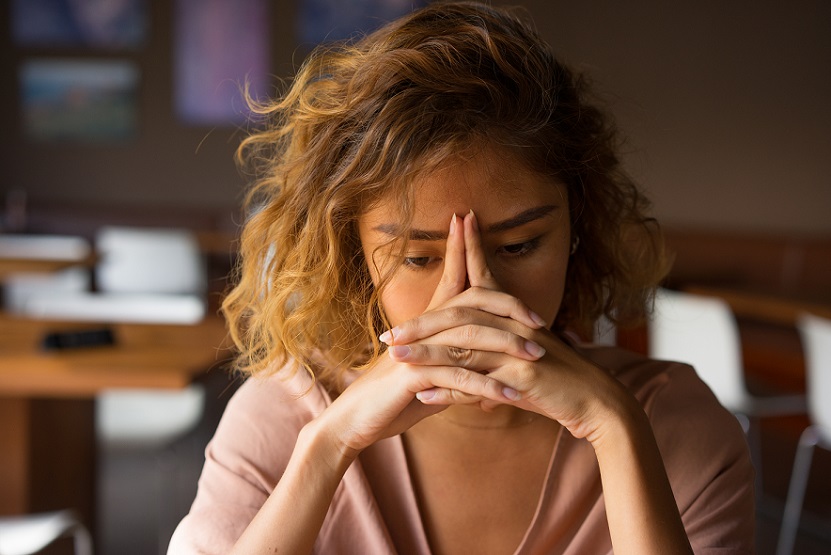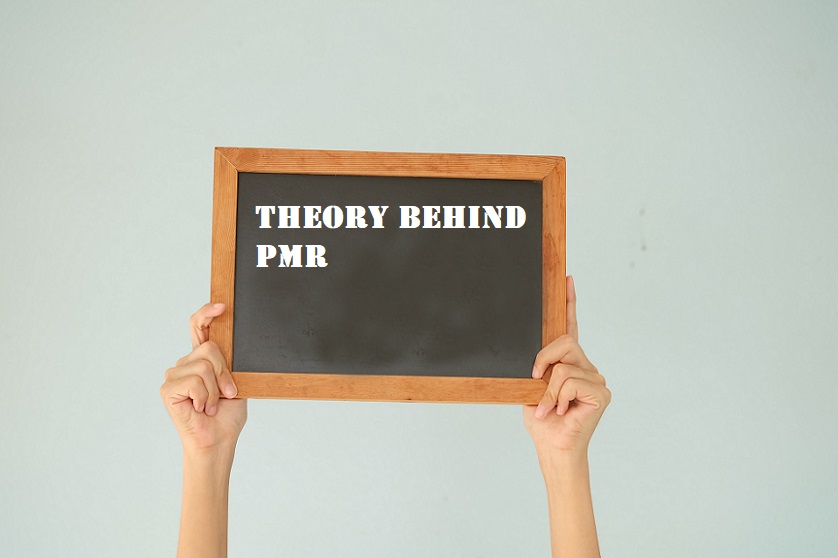Part I: Anxiety Reducing Exercise – PMR:
Progressive Muscle Relaxation (PMR) stands as an effective technique for alleviating tension and stress from both the mind and body, potentially serving as a lesser-known but valuable form of anxiety relief. In this post, we’ll delve deeper into PMR and explore its role as an exercise for reducing anxiety.
Understanding Anxiety and Its Prevalence
- Commonality of Anxiety: Experiencing anxiety is a normal part of the human condition. Many individuals encounter moments of anxiety in various situations, such as before an important exam, while preparing for a work presentation, or even during competitive sports events.
- Anxiety in Everyday Life: It’s important to recognize that feeling anxious is not always indicative of a disorder; rather, it can be a natural response to stressors or challenges encountered in daily life.

Progressive Muscle Relaxation as a Tool for Anxiety Relief
- Technique Overview: PMR involves systematically tensing and then relaxing different muscle groups in the body. This practice helps in identifying areas of tension and consciously releasing that stress.
- Benefits of PMR: By progressively working through the body, PMR can significantly reduce physical tension, which is often closely linked to mental stress. This relaxation method can lead to a decrease in overall anxiety levels and promote a sense of calm.
Broader Context of Anxiety Management
- Range of Treatments: Anxiety management encompasses a variety of approaches, from psychotherapy and support groups to medications. Each individual may find different methods more effective based on their personal needs and circumstances.
- Incorporating Mindfulness Practices: Alongside PMR, other stress management techniques like meditation, yoga, and mindfulness practices can be highly beneficial. These methods focus on cultivating a state of awareness and presence, which can help mitigate feelings of anxiety.
- Holistic Approach: Combining PMR with other strategies can provide a more holistic approach to managing anxiety, addressing both the physical manifestations of stress and the underlying psychological factors.
In summary, PMR offers a practical and accessible way to reduce anxiety and its physical symptoms. When integrated into a broader anxiety management plan, it can contribute significantly to improving mental well-being and overall quality of life.
How Does Anxiety Differ From Anxiety Disorders?
According to the National Institute of Mental Health, anxiety disorders involve anxiety that doesn’t go away. Consequently, the anxiety starts to effect our daily lives and many aspects within.
Progressive Muscle Relaxation (PMR): Tension and Relaxation
Progressive Muscle Relaxation is a technique that focuses on alternately tensing and then relaxing the major muscle groups in the body. This method is notable for its simplicity and the ease with which it can be incorporated into a daily routine, making it accessible to everyone, regardless of their schedule or lifestyle.
Key Aspects of PMR
- Ease of Practice: One of the main advantages of PMR is its straightforward approach, allowing it to be practiced even during a busy day. This accessibility ensures that a wide range of individuals can benefit from this technique.
- Physical and Mental Benefits: At its core, PMR aims to reduce physical tension in major muscle groups. This reduction in physical tension often leads to a corresponding state of mental calmness and relaxation.
Applying PMR in Various Situations
- Versatile Application: Beyond its use as a regular relaxation practice, PMR can also be effective in acute situations, such as during panic attacks or moments of intense nervousness and stress.
- Short Duration Practices: The technique can be applied in short bursts, making it an ideal tool for immediate stress relief in situations where time may be limited.
- Holistic Relaxation: By focusing on both the physical and mental aspects of relaxation, PMR provides a holistic approach to stress management, promoting overall well-being.
PMR stands out as a practical and effective relaxation technique, particularly valuable for its ability to alleviate both physical tension and mental stress. Its versatility and ease of use make it an excellent tool for managing anxiety in various circumstances.
Understanding the Mechanics of Progressive Muscle Relaxation (PMR)
The theory behind how PMR works is rooted in the body’s response to stress. Everyone experiences stress in their lives, and individuals cope with its effects in various ways. A common physical response to stress is muscle tension, and it’s this response that PMR specifically targets.
The Process of PMR
- Stress and Muscle Tension: Stress often leads to involuntary muscle tension. This tension can be subtle and might go unnoticed initially, but over time it can lead to discomfort and exacerbate stress.
- Tensing and Relaxing Muscles: The practice of PMR involves a two-step process:
- Tensing: First, you intentionally tense a specific muscle or muscle group while inhaling. This intentional tension helps you become more aware of what muscle tension feels like.
- Relaxing: Then, you purposefully relax that same muscle or muscle group while exhaling. This act of relaxation allows you to experience the contrast between tension and relaxation, highlighting the sensation of releasing stress.

The Benefits of This Approach
- Increased Awareness: By alternating between tensing and relaxing muscles, PMR helps increase bodily awareness, particularly regarding where and how you hold stress.
- Relief from Stress: This technique facilitates a deeper understanding of how to consciously relax muscles, leading to a reduction in overall stress levels.
- Mind-Body Connection: PMR not only addresses the physical symptoms of stress but also helps in calming the mind, reinforcing the connection between physical relaxation and mental tranquility.
In essence, PMR serves as an effective tool for managing stress by teaching the body and mind to recognize and release muscle tension. This simple yet powerful technique can be a valuable addition to anyone’s toolkit for stress management and relaxation.
Hence, the theory and principle of PMR comes into play. The theory is simple, while your body is physically relaxed, you cannot feel anxious. As you systematically constrict or tense muscles, then follow that act with releasing the tension, you can remove stress from the body.
Research Study:
Progressive muscle relaxation was applied to one study in 130 Chinese patients with pulmonary arterial hypertension (“a debilitating and chronic illness”). Within the study it aimed to assess it’s effect on patient quality of life (QOL), specifically anxiety and depression.
In conclusion, noting that the PMR group as compared to the control group showed significant improvements in all three aspects (anxiety, depression & QOL)
Video On Progressive Muscle Relaxation
Performing Progressive Muscle Relaxation: A Step-by-Step Guide
Progressive Muscle Relaxation (PMR) is a technique that grows more effective with regular practice, offering increasing benefits for relaxation and stress reduction. Here’s a factual step-by-step guide on how to perform PMR:
Step 1: Finding a Comfortable Position
- Flexibility in Positioning: Choose a position that is most comfortable for you. This could be sitting, standing, or lying down on a flat surface like a yoga mat.
Step 2: Focusing on Breath in a Quiet Space
- Creating a Relaxing Environment: If possible, find a quiet space where you can be comfortable and undisturbed.
- Breathing Technique: Begin by taking deep breaths, inhaling through the nose and exhaling through the mouth. Start with a few breath cycles to relax your body and mind before starting the muscle relaxation.
Step 3: Tension and Breathing Control
- Tensing Muscles: After establishing controlled breathing, inhale deeply and tense the first muscle group for about 5 seconds.
- Selective Focus: It’s important to focus on tensing only one muscle group at a time while keeping the rest of the body relaxed.
Step 4: Releasing Tension with Exhalation
- Relaxation Phase: After holding the tension for 5-10 seconds, exhale and simultaneously release the tension in that specific muscle group.
- Awareness of Contrast: Pay attention to the feeling of release and relaxation in the muscle group compared to when it was tensed.
Step 5: Brief Relaxation Between Muscle Groups
- Resting Period: After completing a cycle with one muscle group, rest for about 10-15 seconds before moving to the next group.
Step 6: Bringing Focus Back to the Present
- Completion and Centering: After relaxing all the muscle groups, gently count backward from 10 to bring your focus back to the present moment.
Tips for Effective PMR
- Sequence of Muscle Groups: You can start either from the top (head) and work downward, or from the feet and work upward, depending on what feels most natural to you.
- Gradual Practice: The effectiveness of PMR increases with regular practice, and it may take some time to perfect the technique.
- Listening to Your Body: Ensure that you tense the muscles firmly but without causing pain or discomfort.
Progressive Muscle Relaxation is a valuable tool for reducing physical tension and achieving a more relaxed state of mind. With regular practice, it can be an effective part of stress management and relaxation therapy.
Final Thoughts!
Hopefully this post has given you a simpler understanding of progressive muscle relaxation. This anxiety reducing exercise, can be another great tool in your arsenal in times of anxiety and stress.
Thanks for stopping by, we hope to have you again soon! Be sure to share your experience with PMR and any other relaxation techniques you’ve tried!
References:


